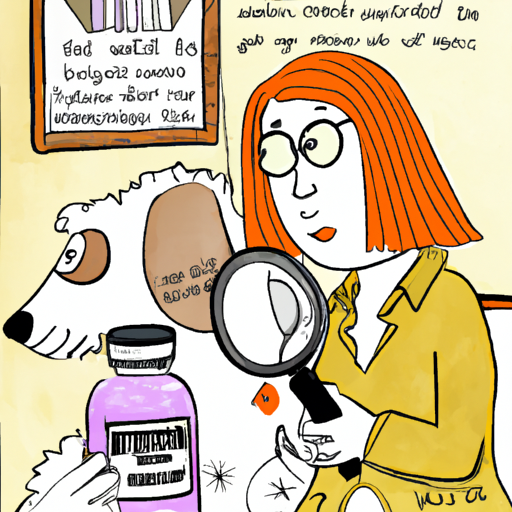Yeast infections are common in dogs, especially those with long or furry coats. The infection can cause them discomfort and even pain. But don’t worry, there are ways to help your furry friend get rid of yeast. Here’s everything you need to know.
Table of Contents
* Yeast Infections in Dogs: An Overview
* Identifying Yeast Infections in Dogs
* How to Treat Yeast Infections in Dogs
* Preventing Yeast Infections in Dogs
* Frequently Asked Questions
Key Takeaways
* Yeast infections in dogs are common and can cause discomfort.
* Identifying the symptoms early can significantly help in treating the infection.
* Veterinary care and home remedies can help manage yeast infections.
* Regular grooming and dietary changes can help prevent yeast infections.
Yeast Infections in Dogs: An Overview
Yeast is a type of fungus that is naturally present on the skin of dogs. However, when the yeast starts to multiply uncontrollably, it can cause a yeast infection, leading to skin irritation and discomfort. Yeast infections in dogs are often associated with allergies, hormonal disorders, or weakened immune systems. It is crucial to understand how to identify and treat these infections to ensure your pet’s health and comfort.
Identifying Yeast Infections in Dogs
Yeast infections often manifest in the form of itchy, red, and moist skin, usually in the ears, between the paws, and around the anal area. Your dog may frequently scratch and lick these areas. Other symptoms may include a foul odor, skin discoloration, and hair loss.
If you notice these signs in your dog, it’s essential to seek veterinary care immediately. The vet may perform a skin scrape test or a fungal culture to confirm the diagnosis.
Here’s a simple table summarizing the common symptoms of a yeast infection in dogs:
| Symptoms | Description |
|---|---|
| Itchy skin | Dog frequently scratches or licks affected areas |
| Red and moist skin | Usually in the ears, paws, or around the anal area |
| Foul odor | Smell emanating from the infected areas |
| Skin discoloration | Darkening of the skin in infected areas |
How to Treat Yeast Infections in Dogs
Upon confirming the diagnosis, your vet will likely prescribe an anti-fungal medication to kill the yeast. Topical treatments such as shampoos and creams containing ingredients like miconazole, ketoconazole, or chlorhexidine are commonly used.
In addition to professional medical treatment, you can also use home remedies to alleviate the symptoms. Apple cider vinegar is a popular natural remedy that can help restore your dog’s skin’s pH balance and prevent yeast growth.
The following steps will guide you through the treatment process:
- Clean the infected areas with a mild, hypoallergenic, and fragrance-free soap. This will help reduce irritation and remove any built-up yeast.
- Apply the prescribed topical treatments. Be sure to follow the vet’s instructions carefully.
- Use home remedies. Dilute apple cider vinegar with equal parts of water and apply it to the infected areas. Avoid open wounds or severely irritated skin.
- Monitor your dog’s progress. If symptoms persist or worsen, seek additional veterinary care.
It can also be beneficial to check out resources like Onetopdog for more information on how to care for dogs with yeast infections.
Preventing Yeast Infections in Dogs
Preventing yeast infections involves regular grooming and dietary changes. Regular baths with anti-fungal shampoos can help control yeast growth.
Diet also plays a crucial role in preventing yeast infections. Many vets recommend a diet low in carbohydrates and sugars since yeast feeds on these substances. Some dog foods are specially formulated to help prevent yeast overgrowth.
Here are some tips on preventing yeast infections:
- Regular grooming: Regularly trim your dog’s fur, especially around the ears, paws, and anal area.
- Healthy diet: A high-protein, low-carb diet can help prevent yeast overgrowth.
- Regular check-ups: Regular veterinary visits can help catch any infections early on.
Remember, preventing yeast infections requires consistent care and attention. You can also refer to Onetopdog’s grooming guide for more tips on keeping your dog’s skin healthy.
Frequently Asked Questions
Q: Can a yeast infection harm my dog?
A: While not life-threatening, a yeast infection can cause severe discomfort and pain to your dog if left untreated.
Q: Can I use human anti-fungal creams on my dog?
A: It’s best to consult with a veterinarian before applying any human medication on your dog. Some ingredients may be harmful to dogs.
Q: Can yeast infections recur?
A: Yes, especially if the underlying cause, such as allergies or hormonal disorders, is not addressed. Regular grooming and a healthy diet can help prevent recurrences.
Treating and preventing yeast infections in dogs is manageable with the right knowledge and resources. It’s essential to be attentive to your dog’s behavior and physical changes and to consult with a vet at the first sign of a possible infection. By doing so, you can ensure that your furry friend stays healthy and happy.



